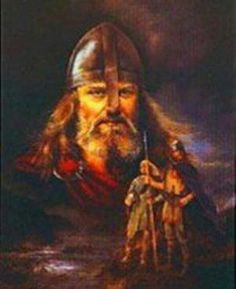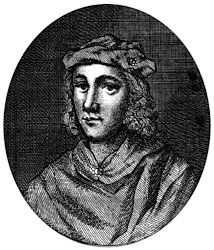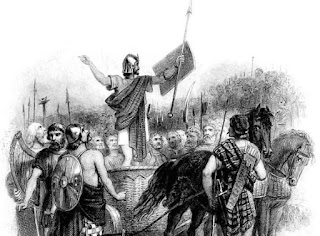KING JAMES III
King James III (10 July 1451/May 1452 – 11 June 1488)
During the first part of this reign, Kennedy, Bishop of St. Andrews, had the chief part in the government. He died in 1466, and on his death the Boyds got hold of the King and of the chief power. These Boyds were originally simple lairds, but they strengthened themselves by bonds with more powerful families, won the King's favour and finally got possession of his person, by making him come with them, partly by persuasion, partly by force, from Stirling to Edinburgh. They then obtained [Pg 76]an act of the Estates declaring that this step had been taken with the full consent and good pleasure of the King. The Lord Boyd was appointed guardian of his person and of the royal strongholds, his son Thomas was created Earl of Arran, and with the earldom the King's sister Mary was given him in marriage.
For many years the rent of the Western Isles had not been paid to the King of Norway. There were heavy arrears due to him which had been demanded in the last reign. It was now agreed to settle the matter peaceably by the marriage of James with Margaret, daughter of Christian of Norway, in 1469. Her dowry was the claim for the arrears and 60,000 florins, in security for which the Orkney and Shetland Isles were placed as pledges in the hands of the King of Scotland. These islands have never been redeemed by payment of the sum agreed on. Arran had been chiefly concerned in bringing about this marriage. During his absence at the court of Christian his enemies were busy in compassing his fall. His wife sent him timely warning of his danger, and he fled first to Denmark and finally to England, whither his father had also escaped. But Alexander, the younger son, was made the scapegoat for the sins of his kindred. He was seized, tried, and put to death for his share in kidnapping the King, which was now denounced as treason. The family estates were forfeited, and most of them were declared inalienable from the Crown.
In the beginning of the reign, Edward the Fourth kept up a seeming show of friendliness, but he was secretly treating with Douglas and the Lord of the Isles to the effect that they should hold the two parts of Scotland as principalities dependent on England. The end of this underhand dealing was that John, son of the Lord of the Isles, invaded and wasted the district [Pg 77]that was to be his principality, all the country north of the Scots Water. This led to the final breaking up of the lordship of the Isles, for he was called to account for his rebellion, and was required to resign the districts of Knapdale and Kintyre, the original Scottish kingdom; the sheriffdoms of Inverness and Nairn, and the earldom of Ross, which was vested in the Crown. In exchange for his proud but doubtful title of Lord of the Isles, he was made a peer of parliament.
In 1474 a marriage was arranged between Edward's daughter Cecily and James the Prince of Scotland. It was broken off owing to a quarrel between the King and his brothers, Alexander Duke of Albany, and John Earl of Mar. They were much more popular than James, and, when Mar died suddenly in Craigmillar Castle, James was suspected of having poisoned him. Albany was arrested and confined in Edinburgh Castle on a charge of treasonable dealings with Edward. He escaped to France in hopes of getting Louis the Eleventh to take his part, but he found a more willing helper in Edward. An agreement was made that Edward should place Albany on the throne of Scotland, that he should hold it, and that he should marry the Lady Cecily. After threatening messages had been exchanged between the two governments, and many threatening's of attack had been made, a great Scottish army was mustered to invade England in earnest.
Battle of Sauchieburn.—The King, who had not learned wisdom by the lesson of Lauder Bridge, grew more [Pg 79]and more unpopular. A confederacy was formed, and a large army was raised by the lords south of the Forth. To give a show of justice to their doings, they placed James the Prince of Scotland at their head, professing to have deposed his father, and to have accepted him as their lawful king. North of the Scots Water the country was true to James, and there he collected a considerable force. The two armies met at Sauchieburn. The King, who was not brave, turned and fled at the first sign that the day was going against him. In his flight he was thrown from his horse and carried to a mill built on the Bannock Burn, where he was murdered by an unknown hand, 1488.











Comments
Post a Comment